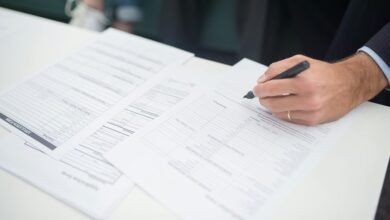1737275500 First-Time Contact Completion Likelihood

The concept of First-Time Contact Completion Likelihood is pivotal for organizations aiming to optimize customer engagement. Various elements, such as nonverbal communication and emotional intelligence, significantly impact the success of initial interactions. Furthermore, the implementation of effective communication strategies can enhance these engagements. Understanding these dynamics is essential for refining outreach approaches. However, the question remains: what specific strategies yield the highest success rates in these crucial first contacts?
Understanding First-Time Contact Completion Likelihood
First-time contact completion likelihood refers to the probability of successfully engaging with a customer during an initial outreach attempt.
Initial impressions play a crucial role in this process, influencing customer receptiveness. However, communication barriers can hinder effective engagement, reducing the chance of establishing rapport.
Understanding these dynamics allows organizations to refine their outreach strategies, ultimately enhancing the likelihood of successful first-time interactions.
Factors Influencing Successful Initial Interactions
Successful initial interactions are influenced by a variety of factors that extend beyond mere communication skills. Nonverbal cues, such as body language and facial expressions, play a critical role in establishing rapport.
Additionally, emotional intelligence enables individuals to perceive and respond to the emotions of others, fostering a connection that can significantly enhance the likelihood of a successful engagement.
Strategies for Enhancing Communication Effectiveness
Effective communication can be significantly enhanced by employing targeted strategies that focus on clarity, active listening, and empathy.
Practicing active listening allows individuals to fully engage with speakers, fostering mutual understanding. Additionally, body language plays a crucial role in conveying sincerity and openness, reinforcing spoken messages.
Measuring and Analyzing Outreach Success
Measuring and analyzing outreach success requires a systematic approach to evaluate the impact of communication strategies implemented.
By utilizing outreach metrics, organizations can quantitatively assess engagement levels.
Response analysis further allows for understanding audience reactions, identifying trends, and optimizing future communication efforts.
This structured evaluation fosters a culture of continuous improvement, empowering teams to refine their outreach initiatives for greater effectiveness and connection.
Conclusion
In summary, the likelihood of successful first-time customer contact hinges on a multitude of factors, including nonverbal cues and emotional intelligence. By employing effective communication strategies and continuously evaluating outreach efforts, organizations can significantly enhance their engagement levels. As the adage goes, “practice makes perfect,” highlighting the importance of persistence in refining these techniques. Ultimately, a strategic focus on these elements will lead to stronger customer connections and improved success rates in initial interactions.





